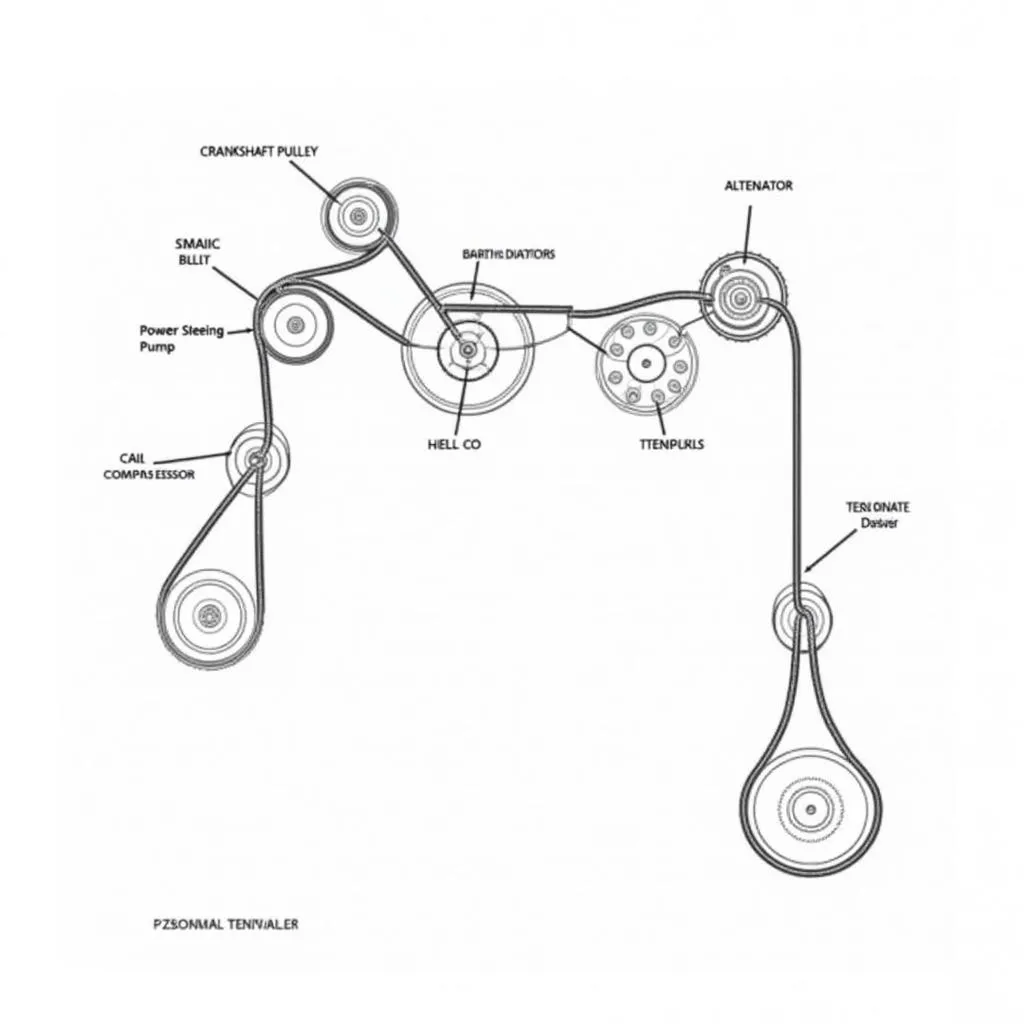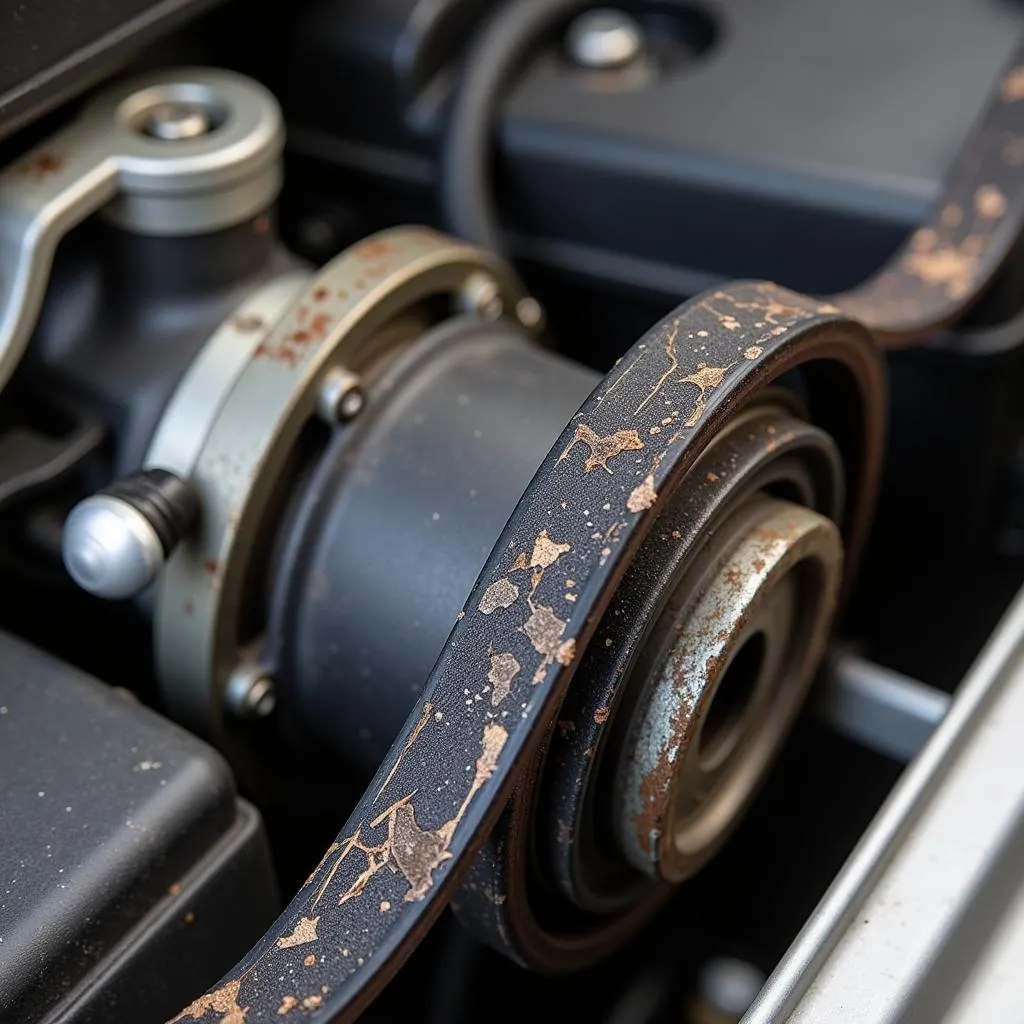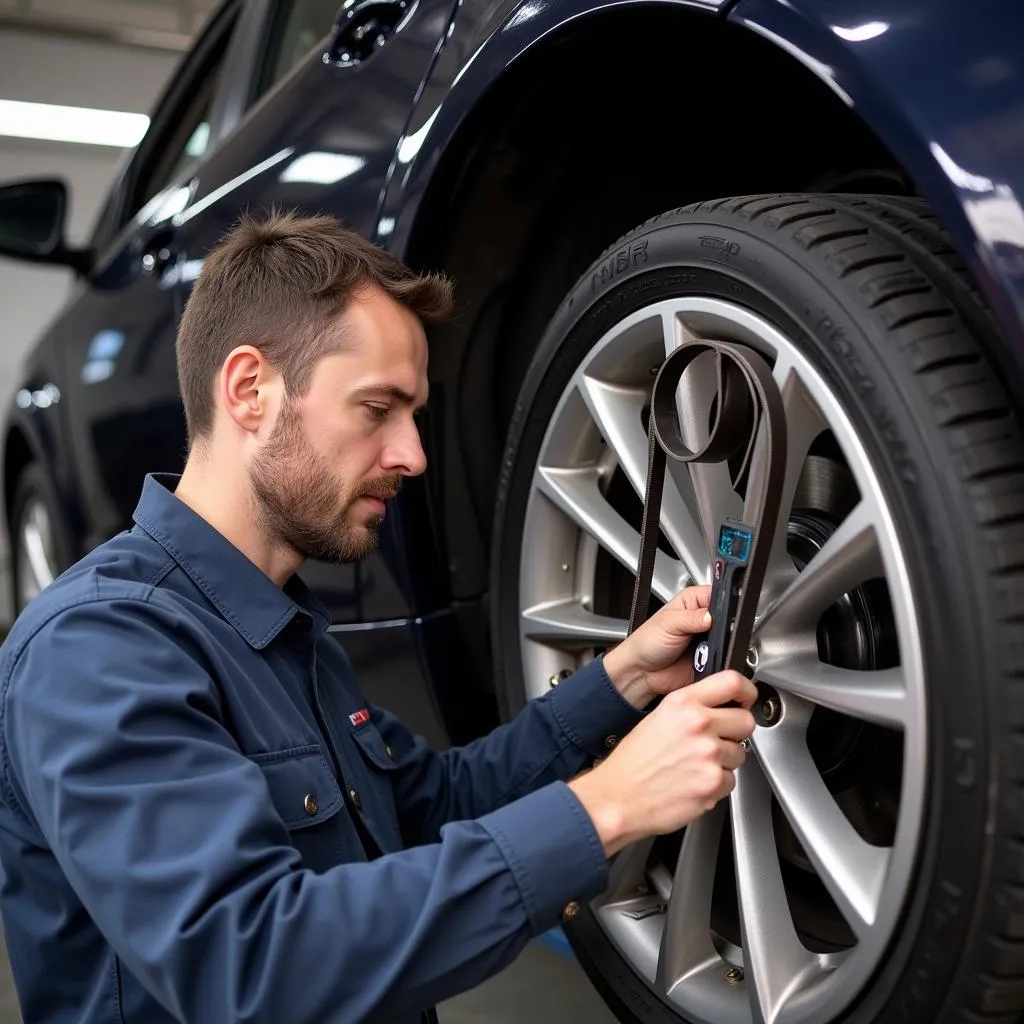BMW 528i Serpentine Belt Diagram: A Comprehensive Guide
The serpentine belt is a critical component of your BMW 528i’s engine, responsible for driving essential accessories like the alternator, power steering pump, and air conditioning compressor. A worn or damaged serpentine belt can lead to various issues, including engine overheating, battery drainage, and loss of power steering. Understanding the serpentine belt diagram and its components is crucial for proper maintenance and troubleshooting.
What Does a Serpentine Belt Do?
The serpentine belt gets its name from its winding path around multiple pulleys connected to different engine accessories. Driven by the crankshaft pulley, the belt transmits rotational force to these accessories, ensuring their smooth operation.
Understanding the BMW 528i Serpentine Belt Diagram
A Bmw 528i Serpentine Belt Diagram visually represents the belt’s routing and the components it interacts with. Familiarizing yourself with this diagram can be incredibly beneficial, especially when diagnosing belt-related problems or attempting a DIY replacement.
 BMW 528i Serpentine Belt Diagram
BMW 528i Serpentine Belt Diagram
A typical BMW 528i serpentine belt diagram includes:
- Crankshaft Pulley: The primary driver of the serpentine belt, receiving power directly from the engine’s crankshaft.
- Alternator: Responsible for generating electricity to charge the battery and power various electrical components.
- Power Steering Pump: Provides the hydraulic pressure required for smooth power steering operation.
- Air Conditioning Compressor: Compresses and circulates refrigerant within the AC system to cool the cabin air.
- Tensioner Pulley: Maintains the correct belt tension, preventing slippage and ensuring optimal performance.
- Idler Pulleys: Guide the belt along its path, ensuring proper alignment and contact with all pulleys.
Common Symptoms of a Failing Serpentine Belt
- Squealing Noise: A high-pitched squealing sound coming from the front of the engine, often upon startup or during acceleration, can indicate a slipping or worn belt.
- Battery Warning Light: If the alternator is not receiving adequate power due to a loose or broken belt, the battery warning light may illuminate on your dashboard.
- Power Steering Issues: A failing serpentine belt can cause difficulty steering, especially at low speeds, as the power steering pump loses its power source.
- Engine Overheating: The water pump, often driven by the serpentine belt, is vital for engine cooling. A broken belt can lead to engine overheating and potential damage.
 Worn Serpentine Belt on BMW 528i
Worn Serpentine Belt on BMW 528i
When to Replace Your BMW 528i Serpentine Belt
BMW recommends replacing the serpentine belt every 60,000 to 100,000 miles or as part of your regular maintenance schedule. However, it’s always a good practice to visually inspect the belt for signs of wear and tear, such as cracks, fraying, or glazing, during every oil change.
Replacing the Serpentine Belt
While replacing the serpentine belt is considered a moderately difficult DIY task, it’s always advisable to consult your owner’s manual and follow the recommended procedures.
Expert Insights
John Miller, a seasoned BMW mechanic with over 20 years of experience, emphasizes the importance of using OEM or high-quality aftermarket belts. “Using cheap, low-quality belts can lead to premature wear and potential engine damage,” he warns.
 BMW Mechanic Inspecting Serpentine Belt
BMW Mechanic Inspecting Serpentine Belt
Conclusion
Understanding the BMW 528i serpentine belt diagram is essential for proper vehicle maintenance and troubleshooting. Regularly inspecting the belt and adhering to the recommended replacement intervals can prevent costly repairs and ensure your BMW 528i runs smoothly for miles to come.
